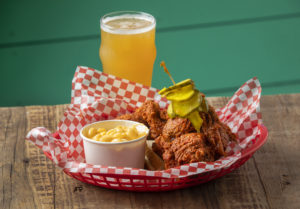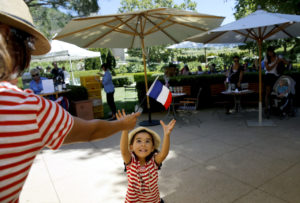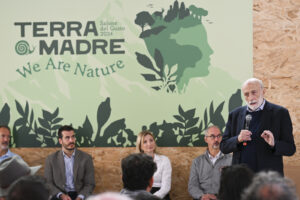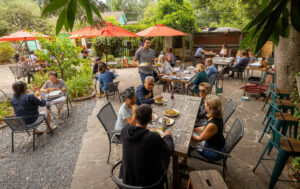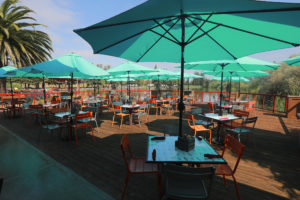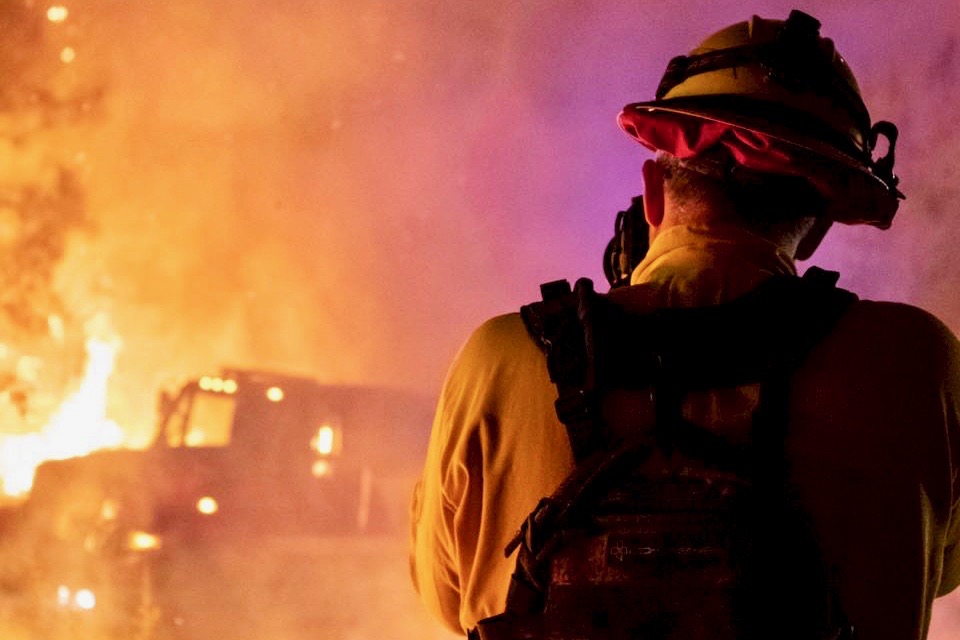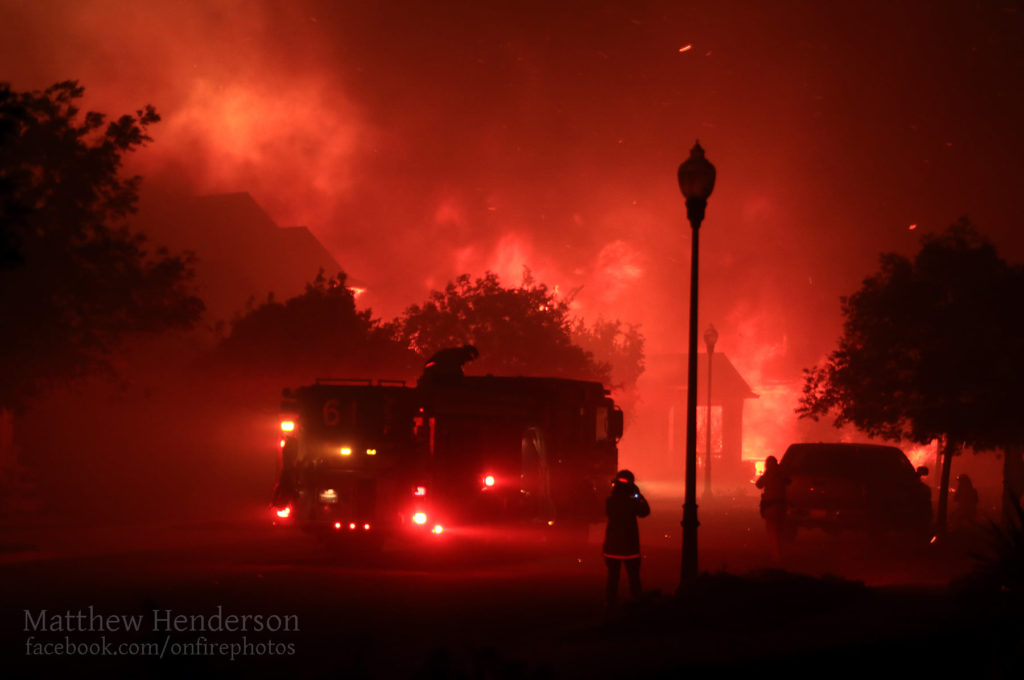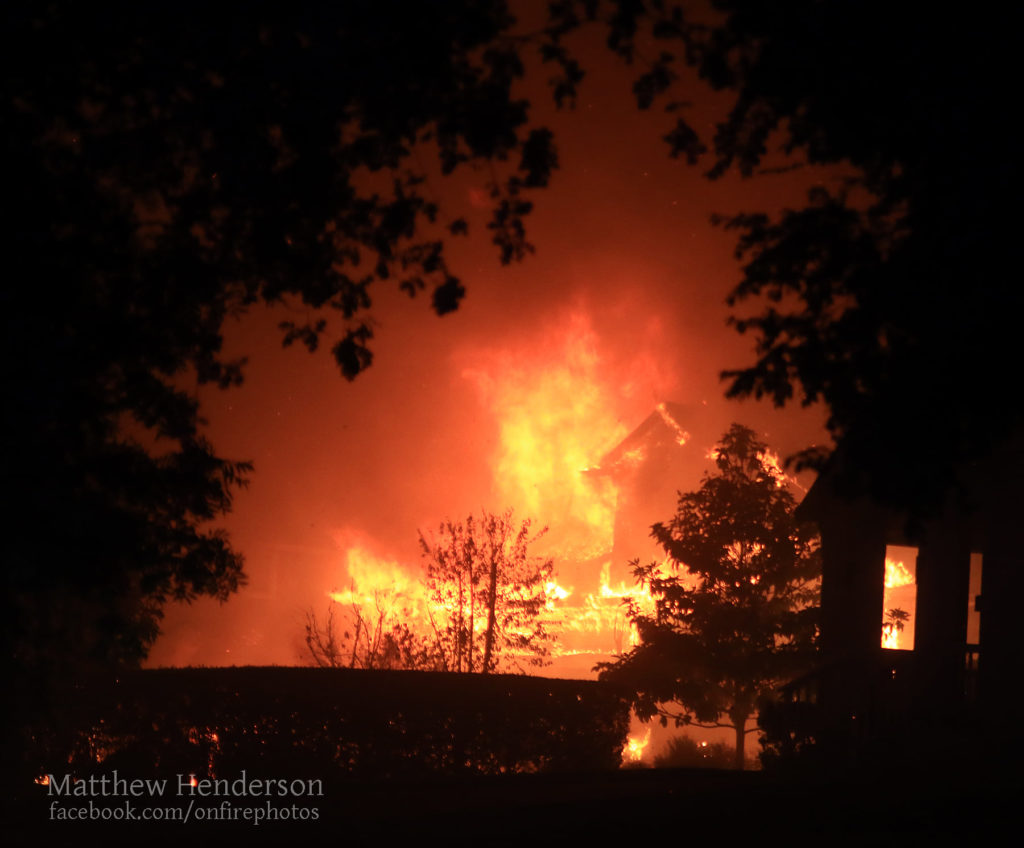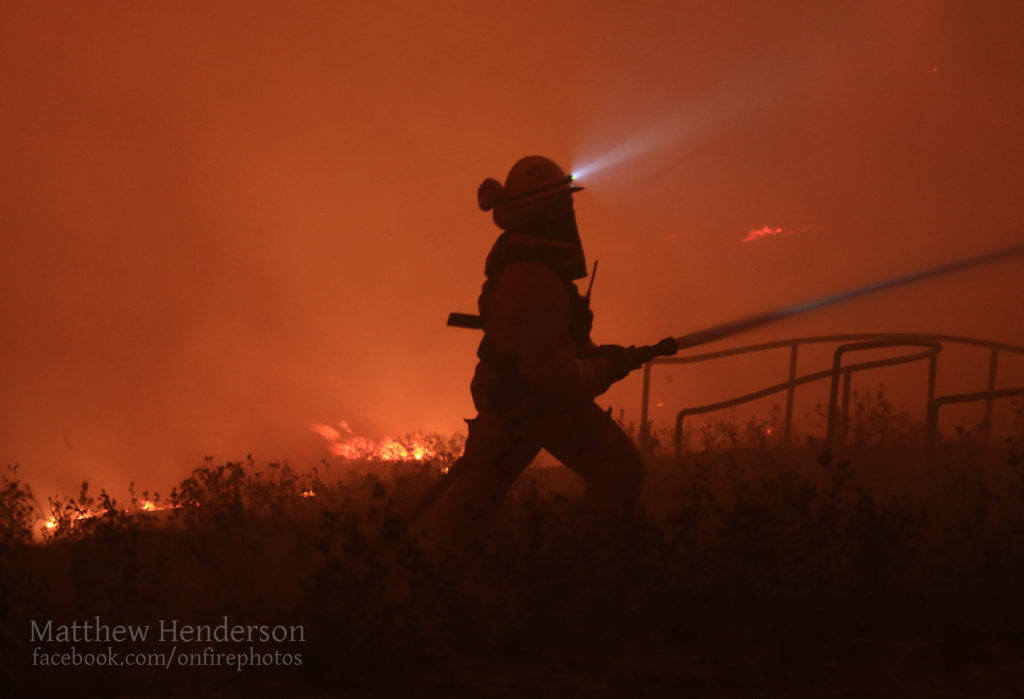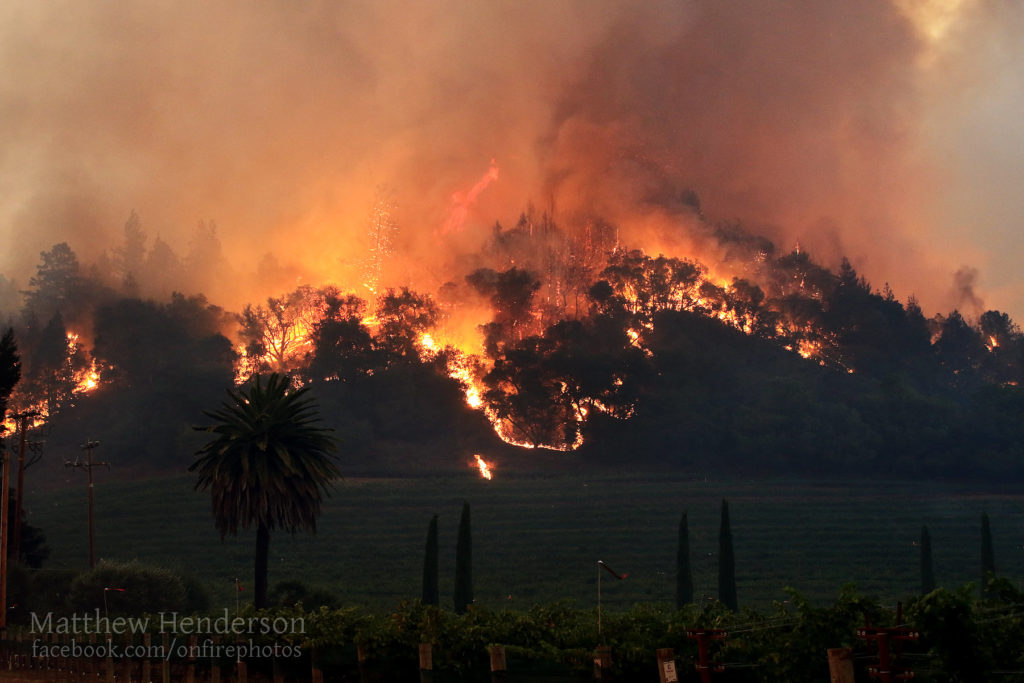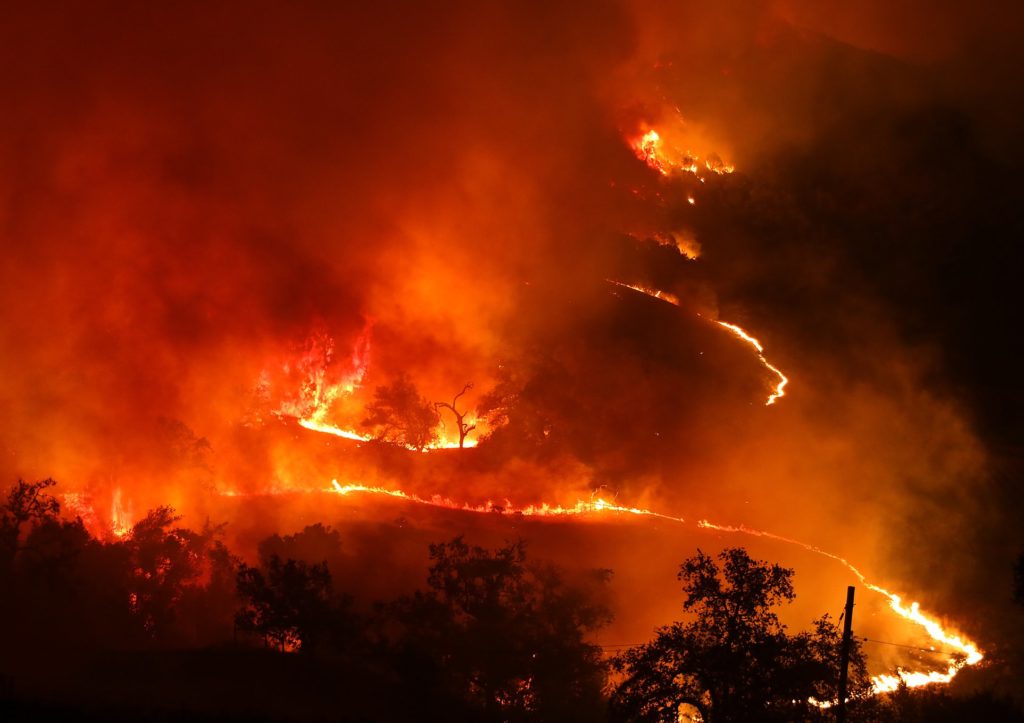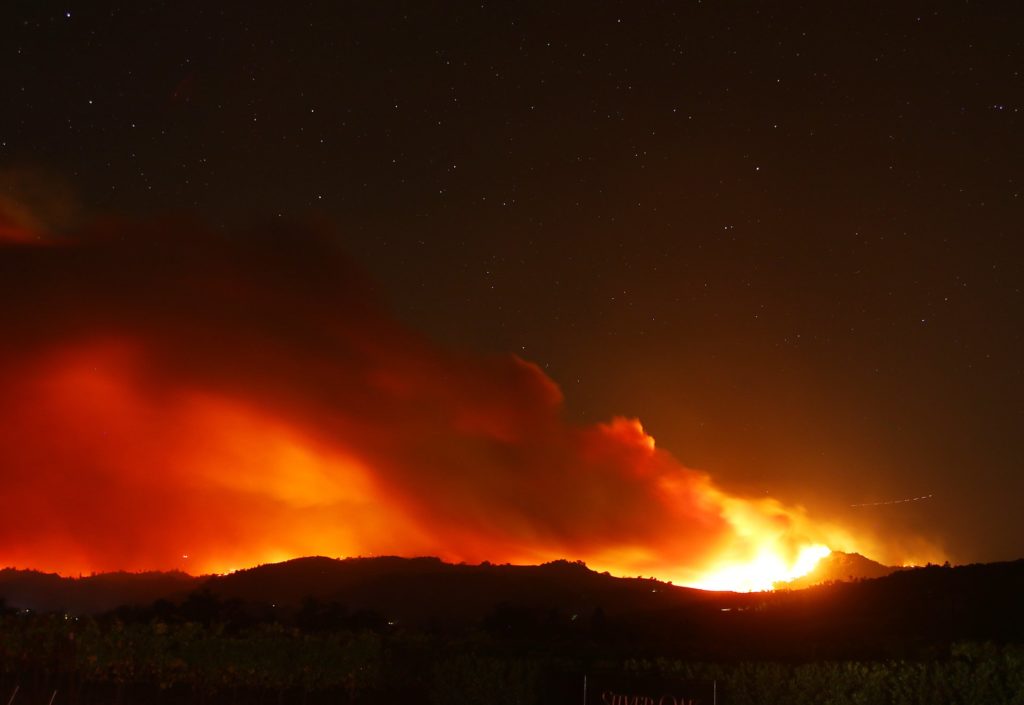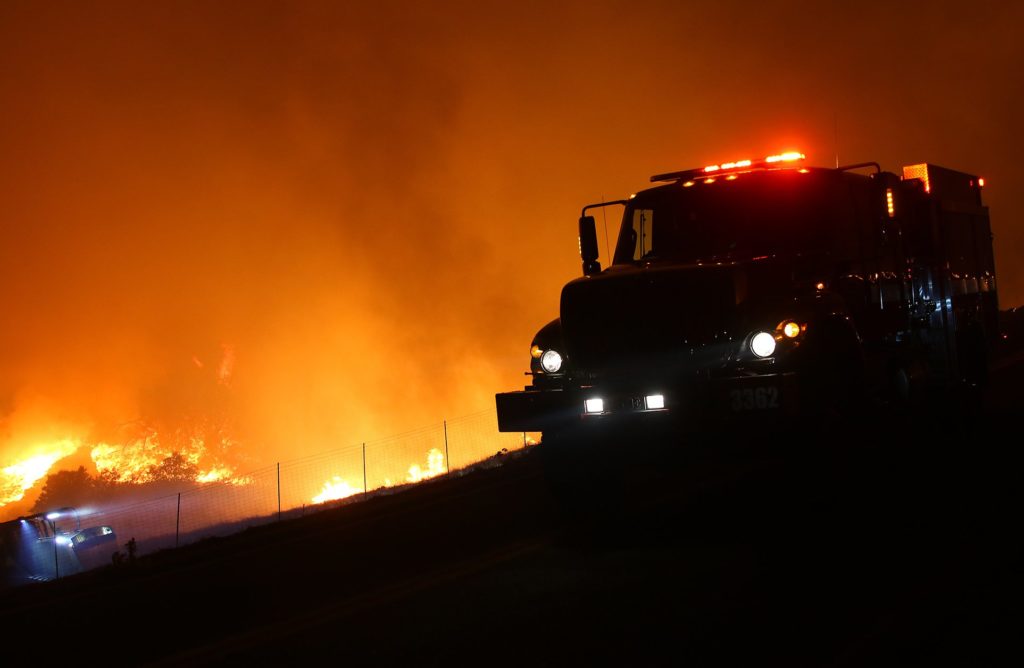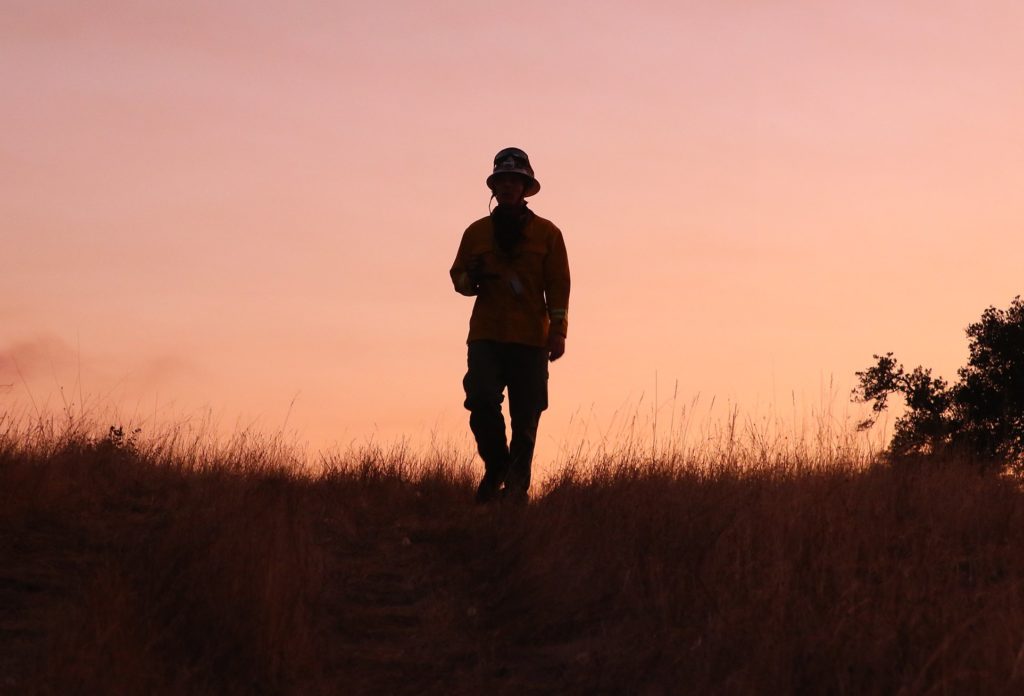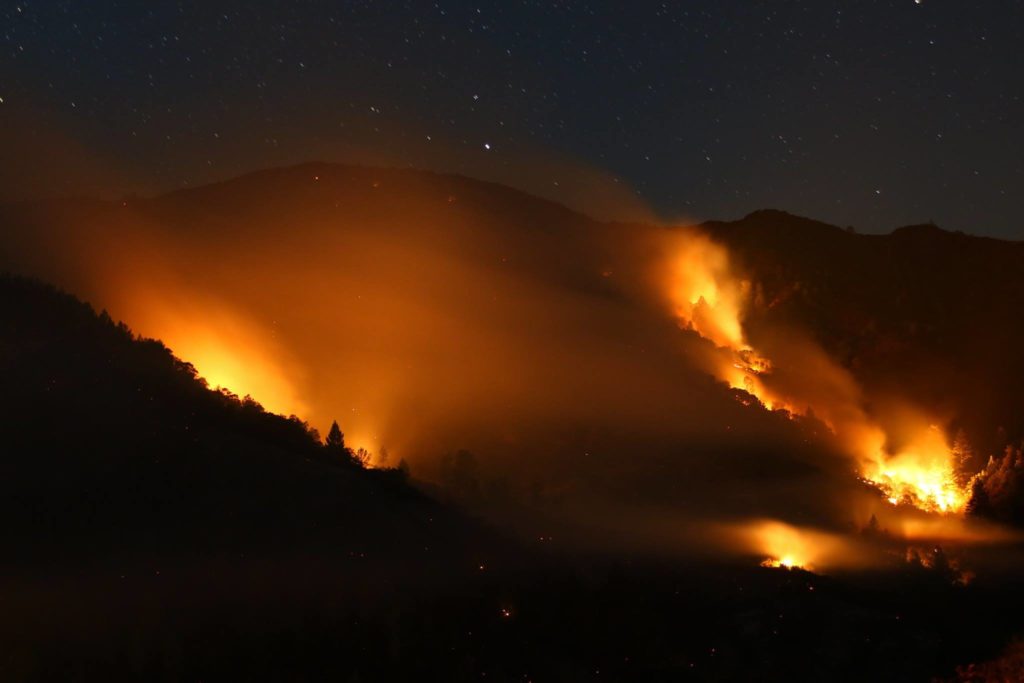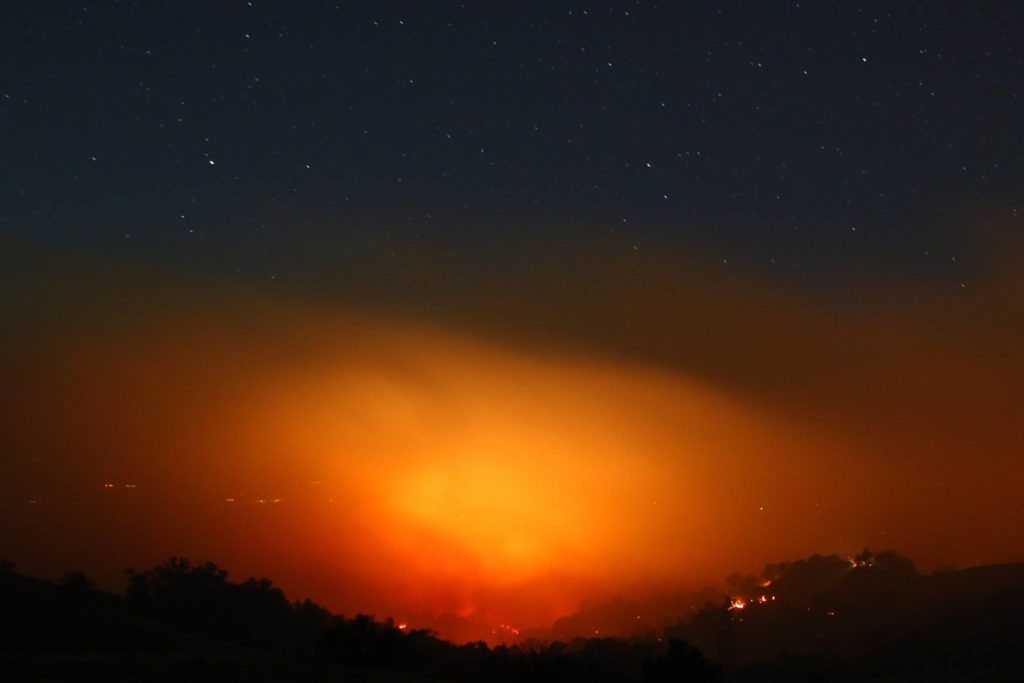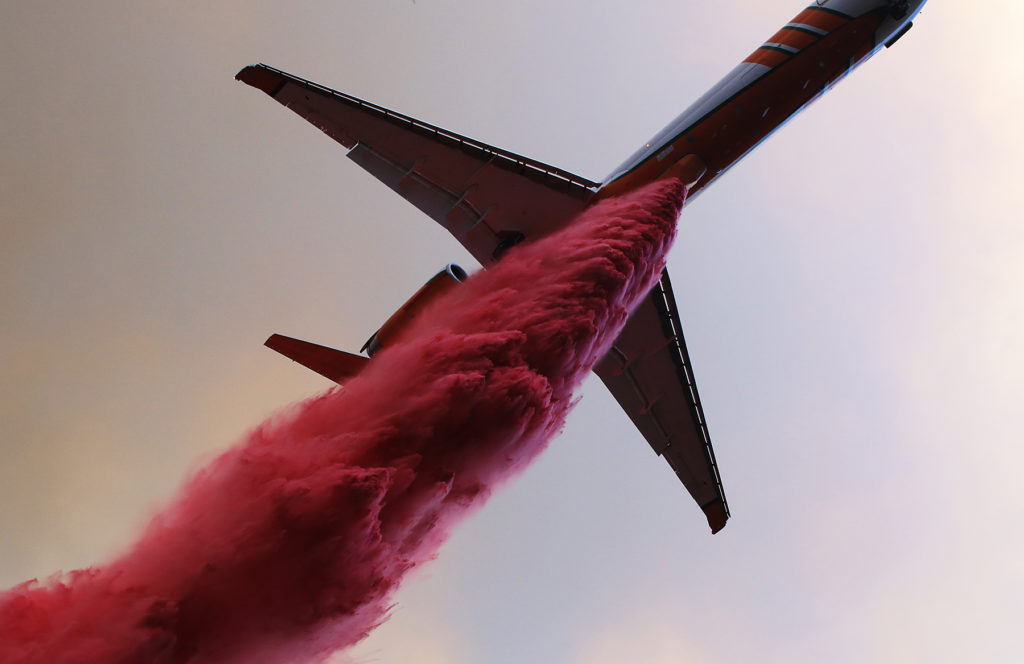As the Glass fire overtook homes above Rincon Valley early Monday morning, thousands of Sonoma County residents were watching the situation unfold in real time on Facebook through live video footage captured by fire chaser and photographer Matthew Henderson.
Henderson, who uses the social media handle OnFirePhotos, is a 46-year-old Dixon-based independent journalist who has covered every major fire in California since 2005, including the Tubbs fire in 2017 and the Kincade fire in 2019. He has more than 36,000 followers on Facebook and a reach of nearly 2 million viewers for his videos. Over the years, he has also garnered the respect of firefighters and first responders across the state.
Sonoma Magazine contributor Matt Villano recently caught up with Henderson to discuss his experiences in Wine Country this weekend, and his career chasing fires. The following is a transcript of that interview. Some of the answers have been edited for brevity and clarity.
Most people run away from big wildfires. You run toward them. Why?
My main purpose for being at these fires is to give people as much information as I can.
I’ve never lost a home to fire, but I can imagine being worried and not knowing, ‘Is my place OK?’ I’ve talked to a lot of evacuees in 15 years. They’re out of the area, they don’t know the condition of their house. If I can alleviate just a little bit of their concern by sharing images from where things are happening, I’d like to. If I can give that little bit of hope to people, that makes it worthwhile.
Another big part of what I do is to show people what it means to be a firefighter—what men and women are up against and the conditions they’re in when they fight these fires.
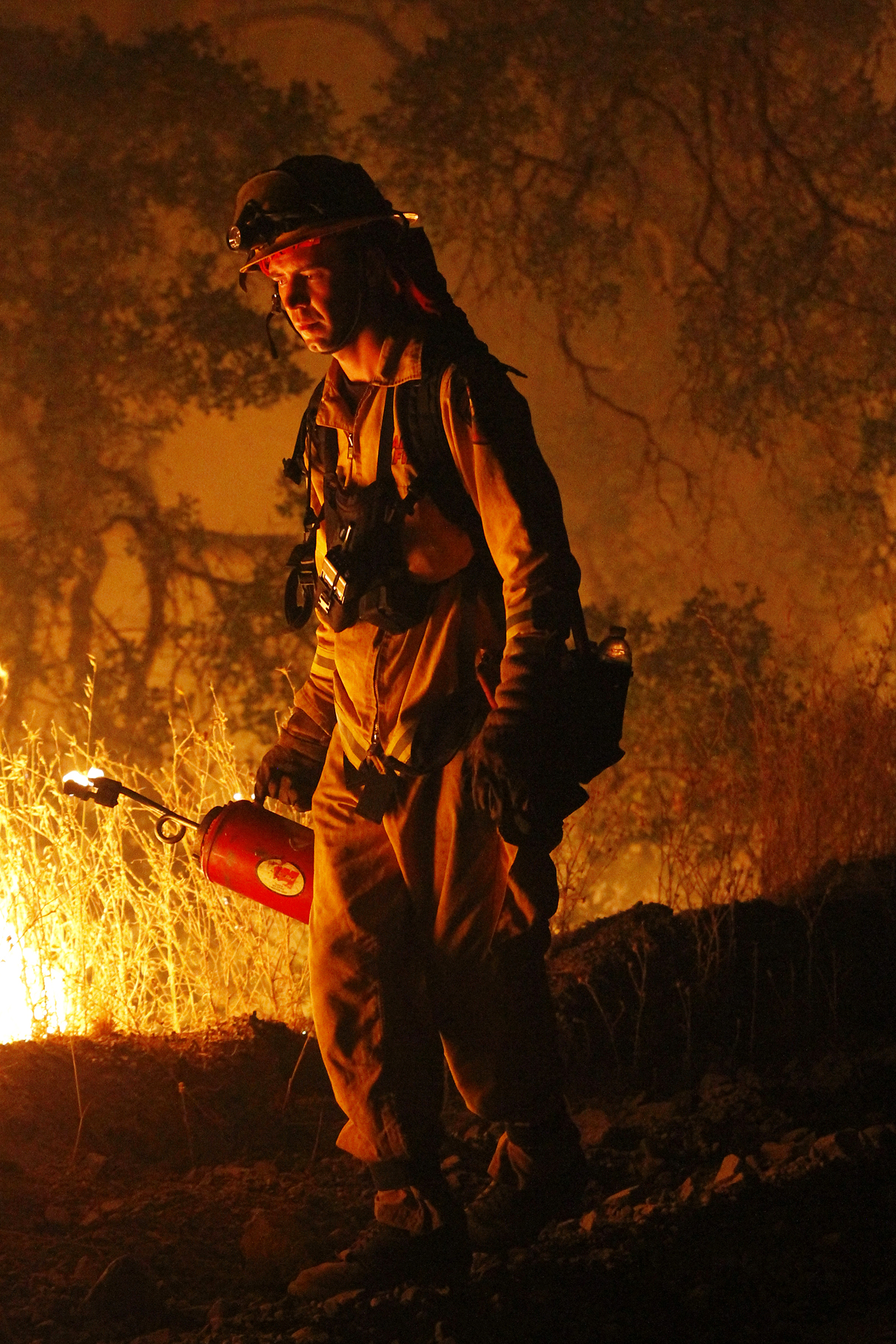
On Monday, people were asking you to check on specific areas and houses and you did. Do you always do that?
I do. A lot of times, I’ll check a block and let people know, ‘Yes, the houses are still there.’ Other times, someone sends me an address, I go check on it and their house is gone. That is hard. In those cases, I always take a picture, send it to them, and call. I tell them, in person, ‘Your home is gone.’
The resiliency of people is incredible. Most of the times when people lose their homes and I’m the first person to tell them, they say, ‘OK. Thanks. Now I can call the insurance company. Now I know.’
Do any of these conversations stick in your mind?
One time, I talked to this guy. He was a famous photographer, his house had burned down and he had lost all the precious negatives that were inside. If it was me, I would have been devastated. He was totally calm. Like, ‘I’m 75. I’ve had a great life. I still have those memories in my head. Those negatives were just sitting there anyway. We’ll move on. I’ll go take more pictures.’ That stuck with me.
Why do you broadcast the fires live?
I used to work at newspapers, and you can’t immediately interact with your audience when you’re doing that. What I love about Facebook is that you can see comments and questions in real time. I love that I can provide in-the-moment and on-the-spot information.
Matthew Henderson’s footage from Featherlight Place in Santa Rosa, at 11 p.m., on September 27, 2020.
Matthew Henderson’s footage from San Ramon Way in Santa Rosa, on Sept. 27 at 10:30 p.m.
You seem almost comfortable around fire. Why is that?
My dad is a retired fire chief out of Woodland. He retired back in 1989. I remember him coming home when I was a kid smelling like smoke. I remember wondering what he was doing, knowing he was a hero, but not really understanding anything else. I never got to see what he was doing. Then I learned.
Tell us about that. How did you get into this?
When I lived in the Midwest in my 20s, I used to chase thunderstorms and tornadoes. Then I moved back home to Dixon and I started working as a photographer at the newspaper in Woodland, the Daily Democrat. I started covering fires. Later I worked at The Reporter in Vacaville.
On the job, these fire guys outfitted me with safety gear and gave me training. I’ve never gone to official certification training, but I did a lot on the ground, just watching and learning. I’m the kind of person who, when someone with experience is talking, I shut up and listen. As I’ve covered more and more fires, I’ve had the opportunity to learn from great firefighters and chiefs.
Now that you’re an independent journalist doing this, how do you get access to fire sites?
People recognize me from the videos. They let me through. I have press plates on my truck. I also have press credentials through the state of California. In our state, if you have credentials, you can go into any disaster scene. Only thing you can’t get into is a crime scene.
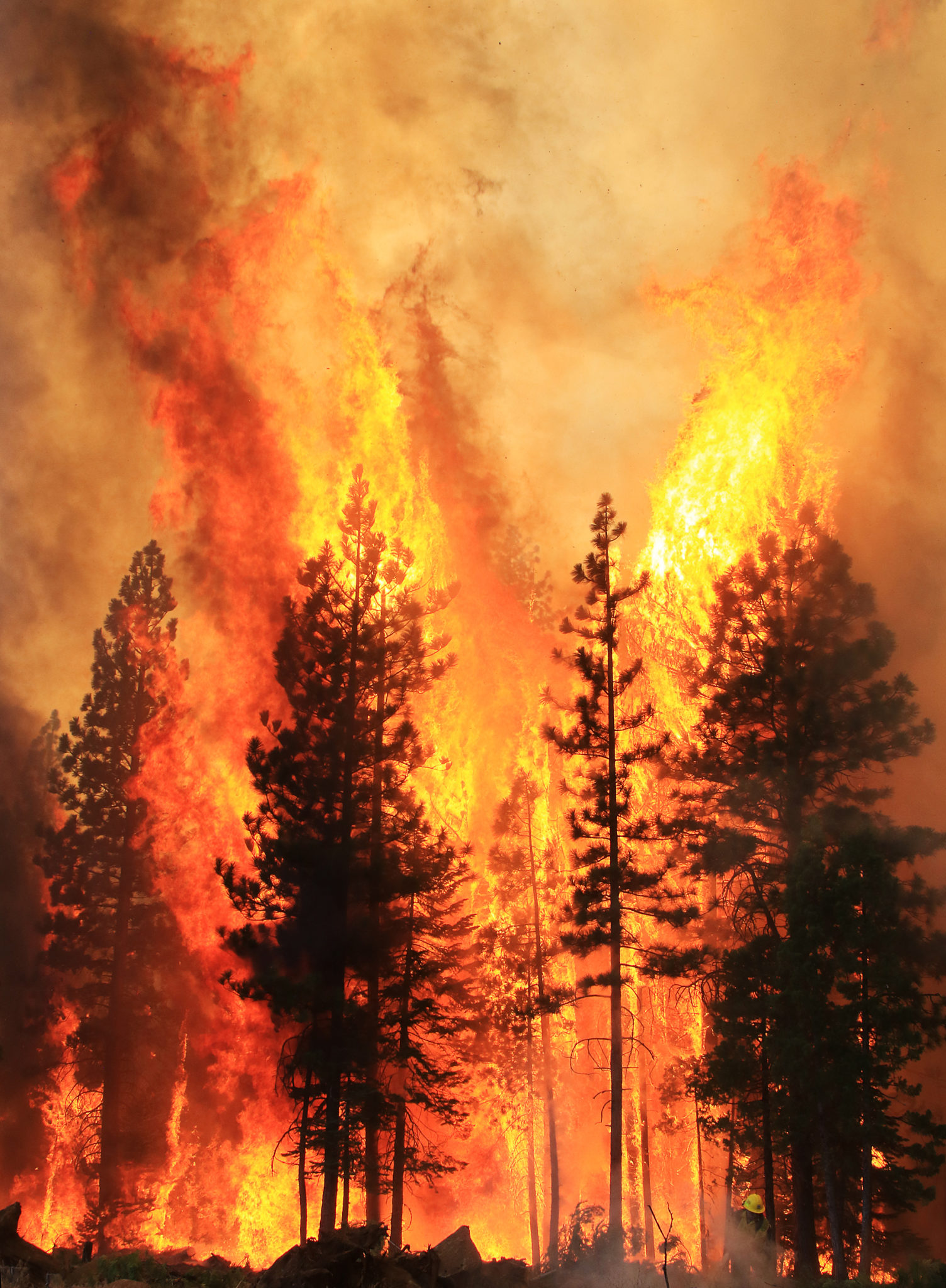
What’s your strategy as you approach a wildfire?
Once there are five or six other photographers standing next to me, I’m out. I want crews and firefighters to know that, when they see me, they can trust me. I know what I’m doing. I’m not going to put them in harm’s way.
My three main goals are: 1. Get home to my wife and three daughters, 2. Not put firefighters in danger, and 3. Get the information out. I’ll add that I don’t feel like I need to get award-winning shots of every fire. I just want to get the information out.
Do you work alone?
I have a team: It’s myself and two other guys. Their names are Adam and Cody.
Cody is my director. He is a firefighter. He watches things on radar and online. He’ll call me and tell me exactly where to go. This weekend, I was over in St. Helena covering the Glass fire and he called me and said, ‘Get to Santa Rosa now.’ He told me exactly what street to go to. I was there and waiting for the fire when it came through Skyhawk [on the east side of Rincon Valley]. During the Carr Fire in Redding in 2018, Cody knew where to send me to see the fire tornado.
Adam also works from home. He watches wind conditions and will fill me in about that. Sometimes Adam comes out with me, too; sometimes you see him in the videos.
What is the craziest thing that you’ve seen in 15 years of covering fires?
Sometimes I feel like I’m the grim reaper when I show up in places. That fire tornado in the Carr Fire was unbelievable. I walked around that neighborhood, and block after block was on fire. I must have walked a mile down this one main street, and every side street was on fire. I remember thinking that this is what it must have looked like in the middle of Baghdad when we were bombing there.
What do you like about this? Why do you keep doing it?
It’s definitely a passion. I love it. I love the adrenaline rush. It’s spectacular and beautiful and awe-inspiring to watch these things. It’s hard to talk about a wildfire being beautiful, especially when it’s taking lives and homes. But when you’re out in a forest and a fire is going and it’s silent and all you can hear is the fire, it’s a pretty amazing experience.
What does your family say about this hobby of yours?
Every few hours my wife texts me, ‘Are you still alive?’ I always try to text her back. She used to watch the live videos like everybody else, but she doesn’t watch them anymore. A few times, I was live streaming and the fire came close—that freaked her out. Still, she supports me in anything I want to do, including putting my life at risk to get this information out there.
What’s in your kit? What do you take with you when you do this?
I have full safety gear—the same equipment that firefighters are wearing. I bring a pack, gloves, and a fire extinguisher. I’ve also got a chainsaw in the back of my truck, and a whole lot of electronics, chargers and cameras. Probably $6,000 worth of stuff.
Do you have another job?
I am the operations manager at a local hardware store. On Monday, I left Santa Rosa around 3 a.m., got home around 5 a.m., got three hours of sleep and then worked a full day.
People keep saying the fire situation is getting worse. To what extent do you agree?
The biggest thing that has changed in the 15 years I’ve been doing is the property destruction. You look at these areas and a lot of the places that burn are relatively new construction. People are building houses into nature and then the fires come and burn them down. As far as the number of fires, I don’t think there’s much change. California history is full of horrific wildfires all the way back to the early 1900s. That’s nothing new.
You certainly have been spending more time in Sonoma County. What’s your take on that?
I was on the ground during the Tubbs fire. I’ve been here for the others. It’s a roll of the dice, man. You have to figure that an area that hasn’t burned in a long time is going to burn at some point, and Sonoma County has a lot of that unburned land. Napa, too.
You go up that road to Angwin, for example, that road scares me every time I go through there. Properties haven’t been cleared and there’s overgrowth and undergrowth. Sooner or later, that whole area is going to burn and people are going to get hurt and there’s going to be a lot of loss of property.
What will the rest of this fire season look like?
I think this week will be a hard week, with depleted crews chasing fires all over the area for multiple days. After that, it’s weather dependent. As it always is.
Finally, how much longer do you think you’ll be doing this?
Well I don’t see myself doing wildfire TikTok videos. No, to be serious, it gets harder and harder every year to go into work after two or three hours of sleep. I love doing this and will do it so long as I can.
You can watch Matthew Henderson’s fire videos and photographs here: facebook.com/onfirephotos


